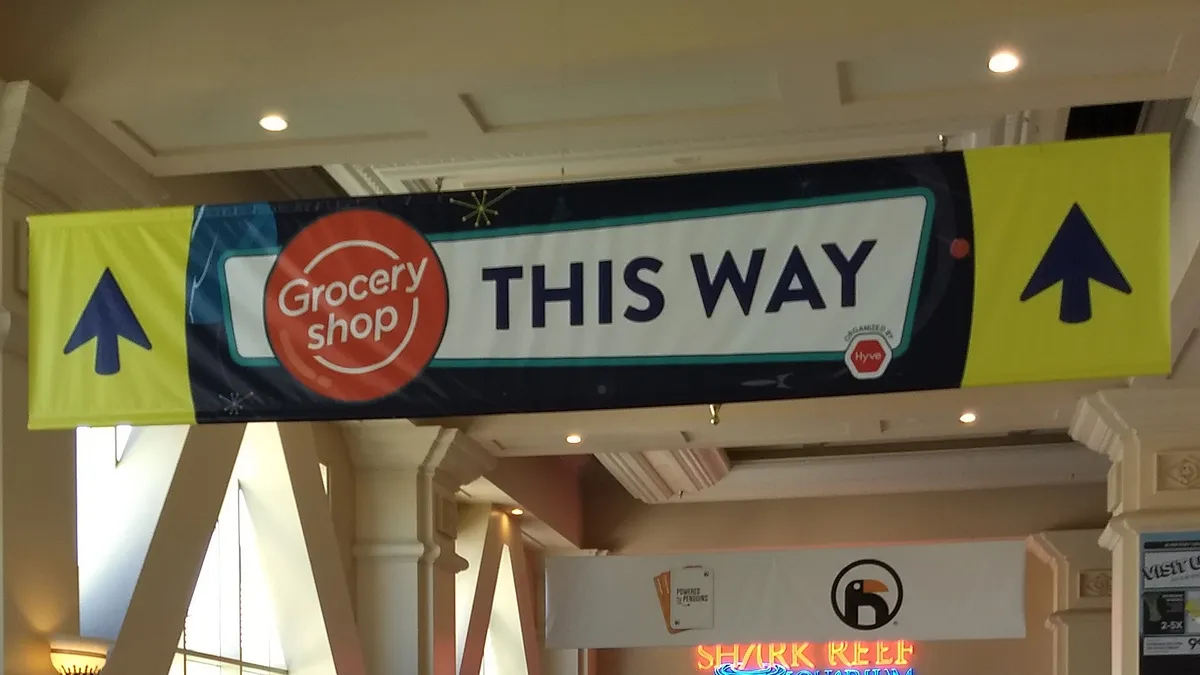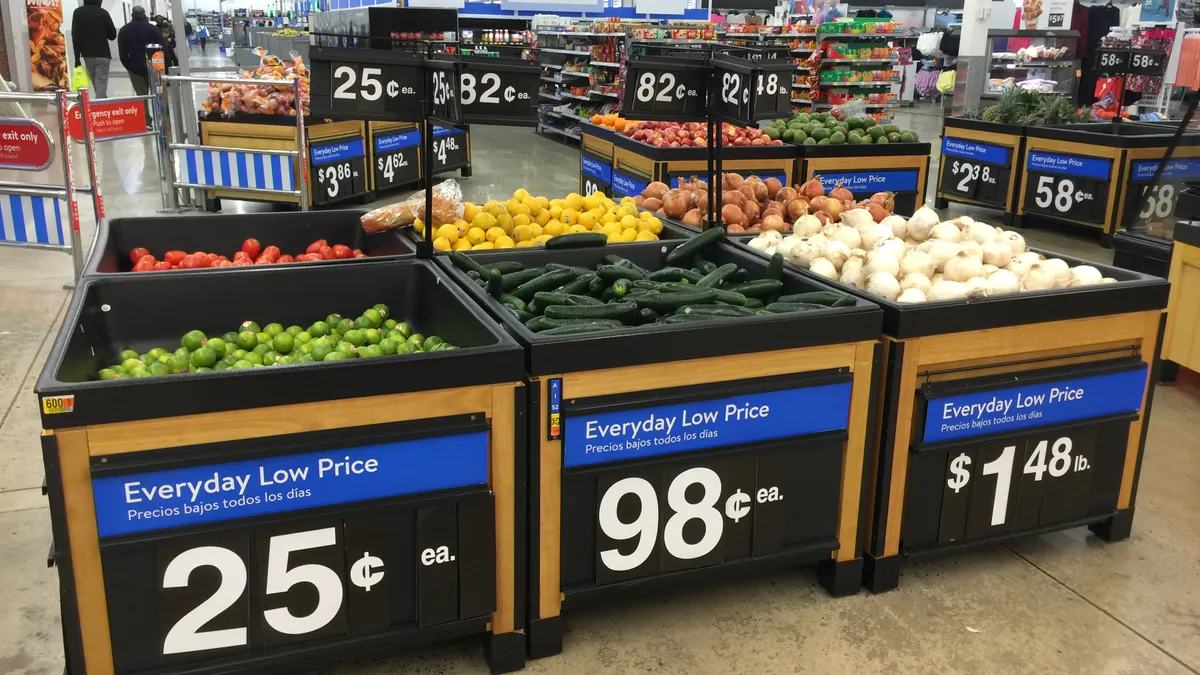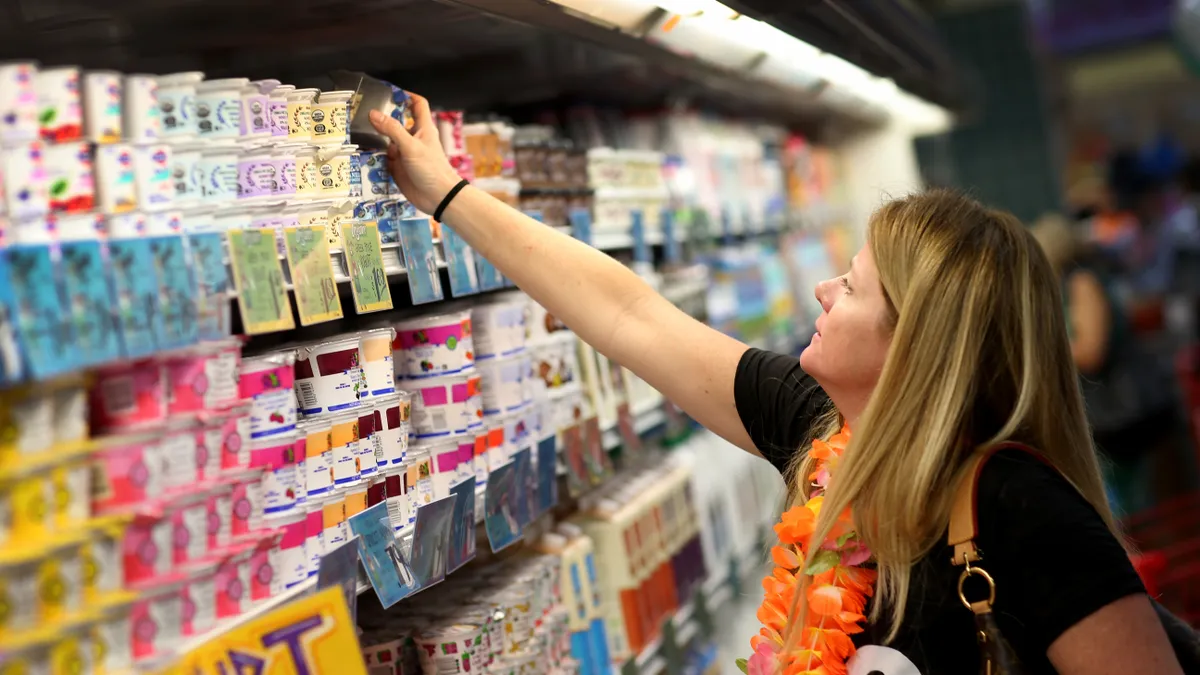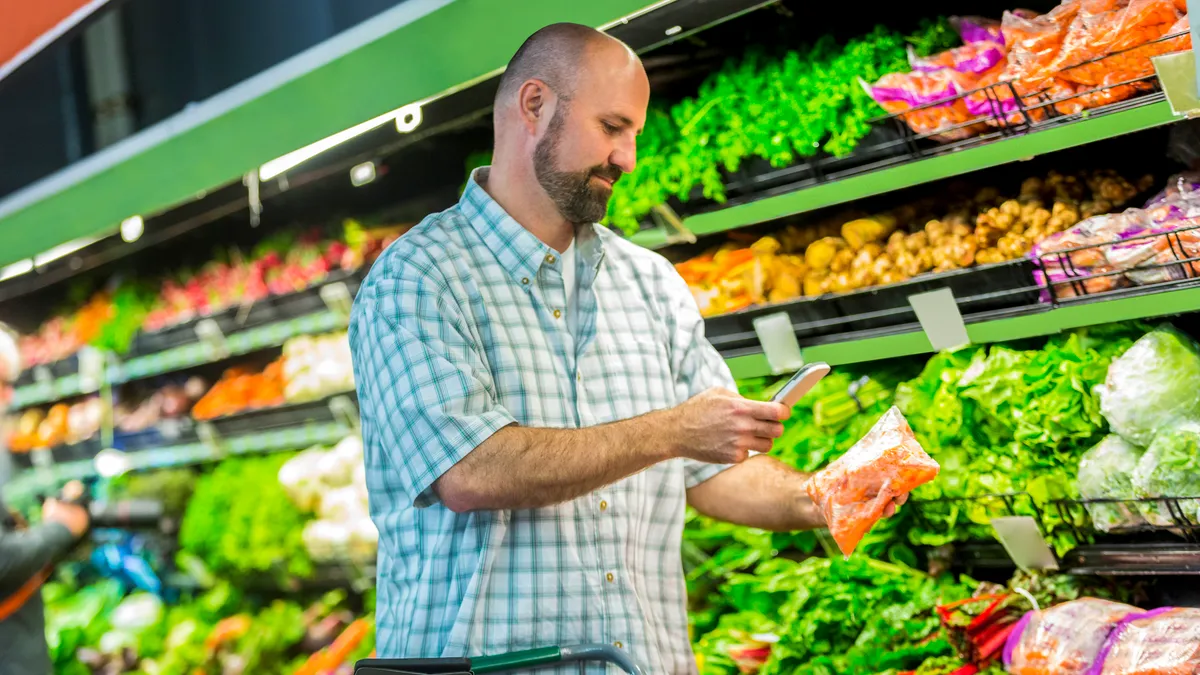The Friday Checkout is a weekly column providing more insight on the news, rounding up the announcements you may have missed and sharing what’s to come. This special edition focuses on the Groceryshop conference held earlier this week in Las Vegas.
Groceryshop returned to normal this year after two very challenging years — kind of.
While the halls and meeting rooms at Mandalay Bay in Las Vegas were again filled with people this week, the food retailing industry is operating in an environment unlike anything it has seen before as it continues to respond to the pandemic — a dynamic that drove conversations, presentations and the general buzz at the four-day conference.
Questions about the role technology is playing in the grocery sector, particularly as it relates to grocers’ abilities to provide shoppers with what they are looking for, defined the four-day event. The powerful position big retailers like Walmart, Amazon and Kroger are in as the food retailing sector evolves in an era characterized by forces like smartphones, social media, inflation and customization was also high on the agenda.
Above all else, it seemed, attendees were looking for answers about what will happen next as the pandemic continues to shake up the grocery industry.
Here are several top takeaways from Groceryshop:
Food retailers are overwhelmed by data
From digital media networks and e-commerce to personalization and frictionless checkout, grocers are dealing with more information than ever — and the industry’s growing focus on managing data was on full display at Groceryshop, from the exhibit hall to conference sessions.
As Kaumil Gajrawala, a managing director at Credit Suisse, noted during a panel discussion about the increasing digitalization of the food industry, grocers have been gaining influence in their relationships with suppliers and deepening their understanding of shoppers because of the information they are able to collect.
“What's happening with data now is that bargaining power is starting to shift” to retailers after decades of control by the CPGs that make many of the products grocers sell, Gajrawala said.
The rising importance of data in grocery also came through during a keynote with Walmart U.S. President and CEO John Furner, who pointed out that the mega-retailer has been channeling resources into predicting what its customers will want going forward as it looks to prepare for whatever might come next as the pandemic recedes. His remarks underscored the challenges — and opportunities — retailers of all sizes face as they confront the sea of data they have access to.
“We found ourselves a bit flat-footed in trying to catch up with [the] capital investments” necessary to respond to shifts in shopper behavior and prepare for the challenges and opportunities that lie ahead, Furner said. “Using data in a way that helps us get ahead of demand I think is our biggest challenge going forward.”
Omnichannel is becoming omnipresent
For grocers still focused on treating e-commerce as separate from their brick-and-mortar experiences, several speakers stressed that food retailers should embrace an omnichannel approach.
What does that look like in practice? Albertsons Chief Merchandising Officer Jennifer Saenz outlined more than half of a dozen digital tools, from curated shopping lists to telemedicine, that the grocery company is using to create synergies between offline and online experiences. And Instacart CEO Fidji Simo told Groceryshop attendees the company’s new suite of in-store tools, including electronic shelf tags, smart carts and digital list building, grew out of conversations with grocers who said consumers who shop both online and offline are “way more valuable than an online-only consumer or an in-store only customer.”
It’s not just the large grocery companies like Albertsons and Kroger who can and should offer multichannel options and break down silos between offline and online experiences, speakers noted.
Omnichannel can help grocers, large or small, achieve e-commerce profitability. Raley’s omnichannel customers spend two to three times more and have larger baskets when they shop online, according to data from its Something Extra loyalty program, Zachary Wilson, the grocery company’s head of e-commerce, said during a session.

Sizing up social commerce and shoppable content
Inspiration and ease: These two words were noted together by several speakers and attendees, including Saenz of Albertsons.
Social commerce and shoppable content are the strategies grocers are tapping into and can further explore as they strive for more inspiring journeys and easier experiences. One session revealed Kroger has linked up with French startup Jow, which offers a weekly meal planning service. At another panel, Saenz said Albertsons has its “eyes on” social commerce.
A Groceryshop session on Wednesday with Ivonne Kinser of non-profit marketing organization Avocados From Mexico and Sam Tomlinson of marketing strategy agency Warschawski dove into high-level strategies and specific examples of how social commerce can benefit brands and retailers. Both noted that social media users desire authentic content that tells a story but doesn’t come across as scripted.
Speakers and attendees didn’t always agree on where the future lies for social commerce and how, or if, shoppable content fits into it — an indication that more experimentation is likely needed. It’s worth noting that Meta has said it will shut down the live shopping feature on Facebook on Oct. 1. Vincent Yang, co-founder and CEO of Firework, wasn’t surprised by the announcement: “Social media is for social media. It’s not for shopping,” Yang said in an interview.
Yang said that shoppable livestreaming and short videos — features Firework helps retailers and brands deploy — can work well on e-commerce sites since people on those sites are already more likely to be interested in learning about and even buying products.
Others, though, see a chance for social commerce and shoppable content to wed. Jupiter, a newly launched shoppable recipe platform, aims to connect food influencers to consumers and allows people to purchase ingredients from their social media feeds.
Walmart the vendor

Walmart is a formidable competitor for grocers. But these days, it also wants to sell some of its proprietary technology and services to them, potentially placing it in frenemy territory.
That push was on display throughout Groceryshop, where the world’s largest retailer had booths, meeting rooms and scores of show advertising hawking its various capabilities. There’s Walmart GoLocal, the white-label delivery service it began selling to retailers last year; Walmart Commerce, its technology division that offers tools for checkout, online fulfillment and more; and Walmart Connect, its media arm that taps into the breaking digital wave.
“We’re merchants first,” Furner said during his keynote. But in recent years, he noted, the company has pinpointed services that can “help everyone else win in a very innovative way.”
Walmart wasn’t the only large retailer at Groceryshop peddling its services to other retailers. Amazon had a booth in the exhibit hall showcasing its Just Walk Out technology, and Target-owned Shipt also showed up with a prominently placed booth at the front entrance of the hall.
Creative partnerships are increasing as digital retail evolves, but it remains to be seen if retailers will be willing to rely on a fierce competitor as a vendor.
Convenience takes center stage
Groceryshop had an educational track dedicated to convenience in retailing, underscoring the drive to meet this consumer demand as businesses expand their services and become increasingly connected. Many of the speakers included executives from c-store chains that are looking to solve the same digital challenges as grocers.
Casey’s CEO Darren Rebelez talked about the company’s recent digital journey and the important role its pizza kitchens have played in driving adoption. Executives from 7-Eleven talked about the company’s delivery service, 7Now, and its sometimes off-the-wall marketing tactics. (Fun fact: The chain recently launched a consumer test panel known as The Brainfreeze Collective, according to Chief Marketing Officer Marissa Jarratt.)
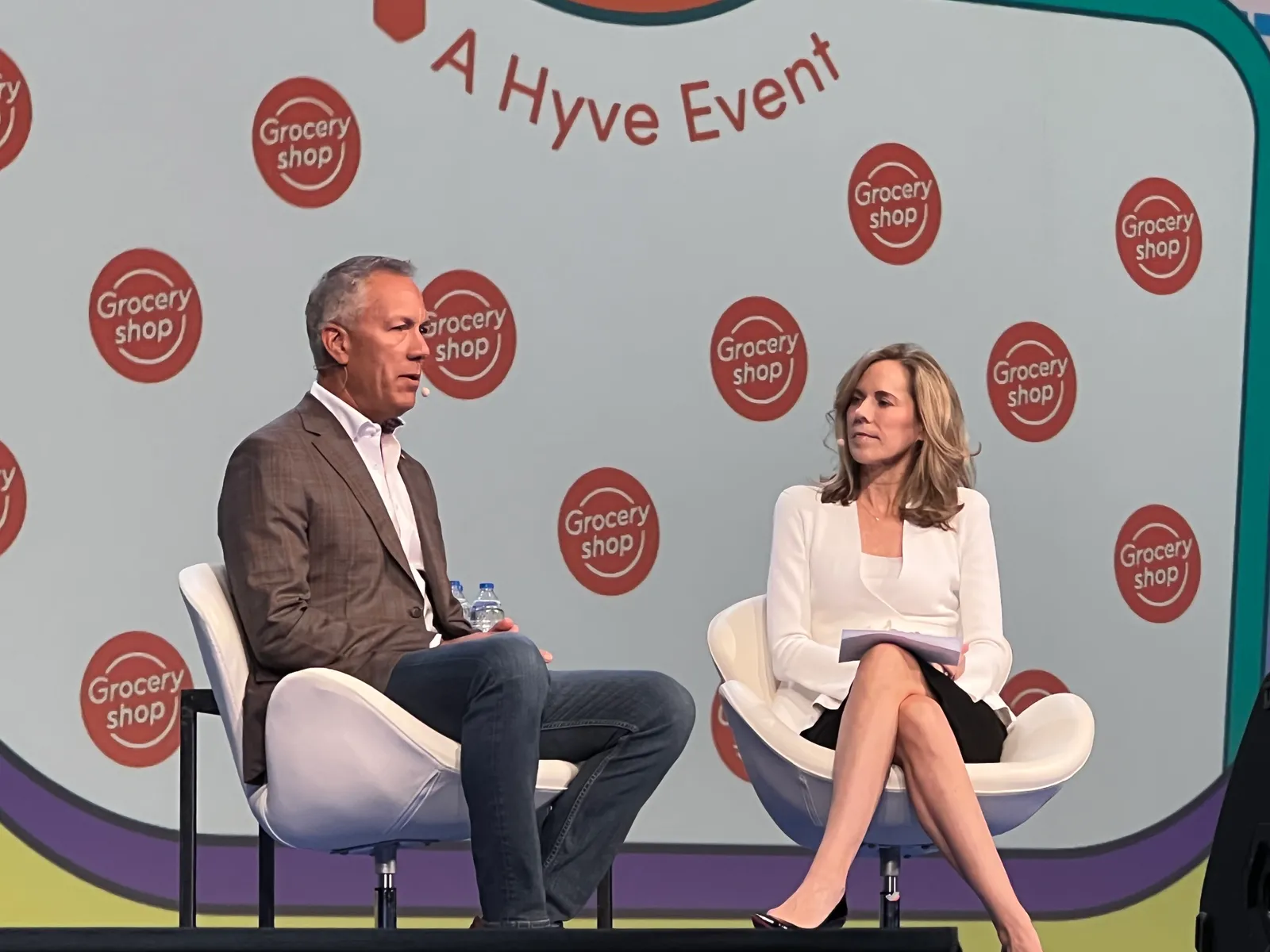
Beyond focusing on convenience stores, Groceryshop sought to probe a question that’s become increasingly relevant for both industries: What is convenience?
That seemingly simple question is evolving rapidly in a digital age when lofty consumer demands like 15-minute delivery have to meet with business realities. And it elicited different answers from different sources. Mike LaVitola, co-founder and CEO of Foxtrot Market, said it’s about being able to serve up relevant products to shoppers. Daniel Folkman, vice president of business at Gopuff, defined it as being able to meet shoppers on their terms. At a time when millions of shoppers are plugged into streaming video, ride-sharing apps and evolving social media platforms, consumers want easy access to food, as well, he said.
Rethinking the need for ultrafast service
Delivery services across the board at Groceryshop this past week expressed how speed, though a useful feature, cannot be the foundation of their business.
During a Wednesday panel, Oskar Hjertonsson, co-founder of Cornershop, which Uber bought last year, said that on-demand service is important. However, there are other more important elements, including selection and price, to consider.
To Hjertonsson, putting speed as a priority means sacrificing price and profitability — something he is not willing to do for his customers.
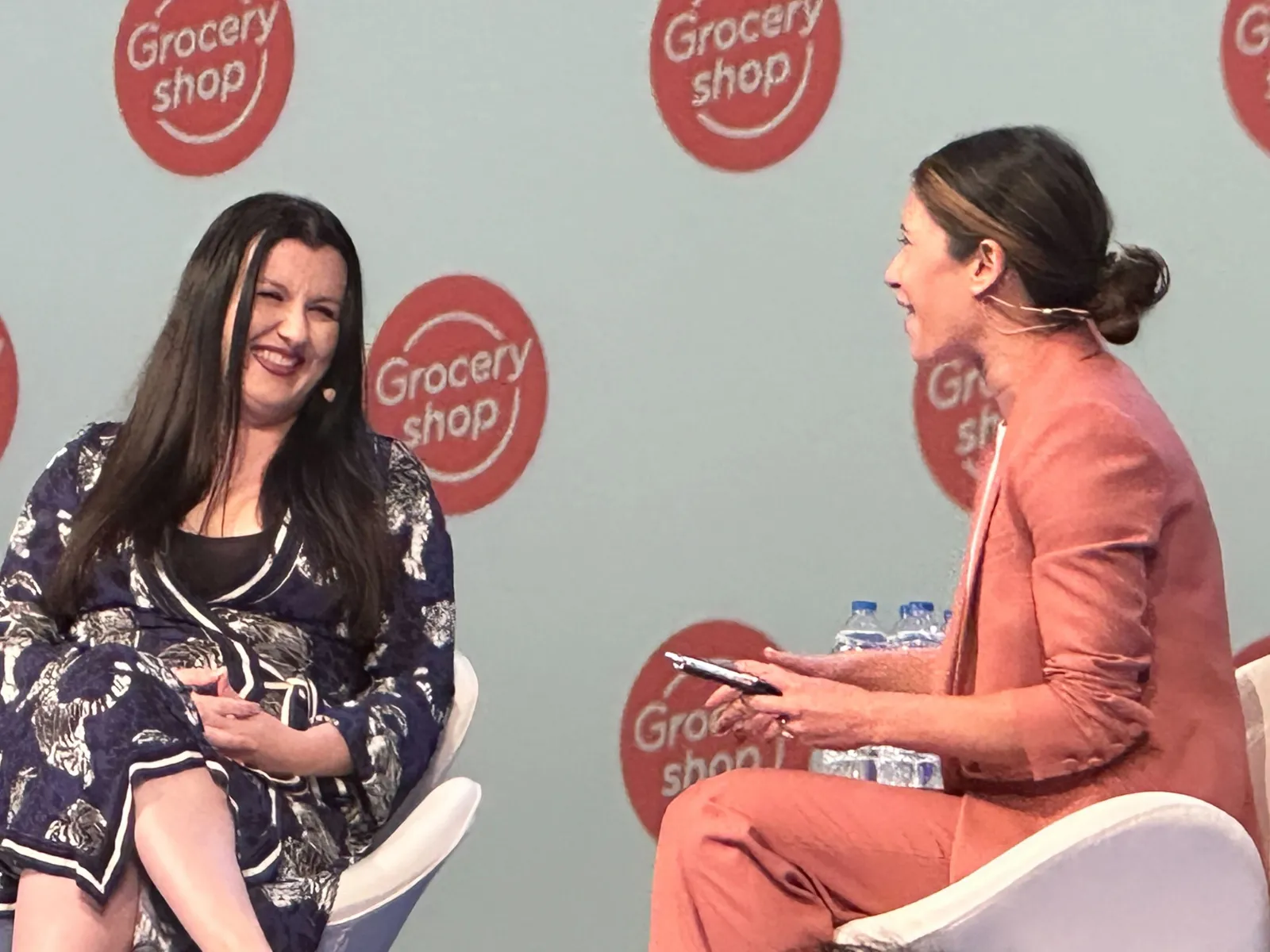
While 15-minute delivery services hit a stride during the start of the pandemic, the industry has been tightening. This year alone, Gorillas, an ultrafast delivery startup, laid off 300 corporate employees in May while Gopuff eliminated 3% of its global workforce, equivalent to approximately 15,000 employees, at the end of March.
“I personally don't believe that the 15-minute grocery delivery model on its own is really a sustainable thing,” Simo of Instacart said during her keynote.
A leader in the industry, Instacart sees the 15-minute delivery model fitting specific needs. But with inflation on the rise and the demand for lower prices taking priority, this instant model is not an affordable strategy.


